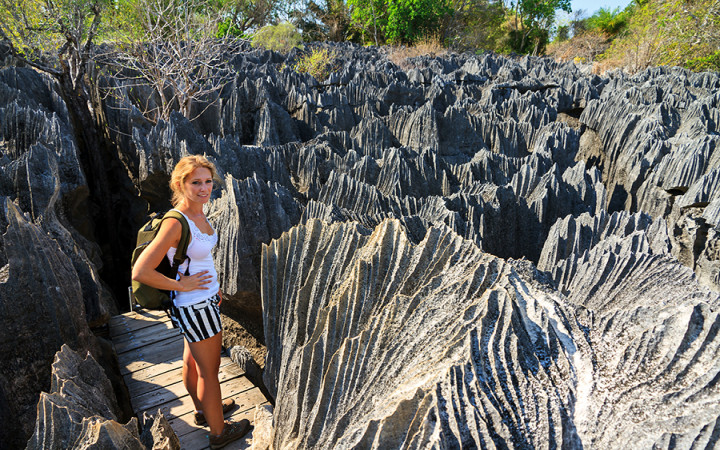Today’s Wonder of the Day was inspired by Ethan. Ethan Wonders, “What is geology and how does it help us today?” Thanks for WONDERing with us, Ethan!
Do you have a bucket list of places you'd like to visit around the world? If you do and you're interested in seeing unique species of animals, then Madagascar is probably near the top of your list.
The island nation of Madagascar is famous among scientists for its biodiversity. Experts estimate that 90% of the species found on Madagascar are endemic and found nowhere else on Earth. How cool is that?
There's one part of the island that's known for both its biological diversity and its unique geology. Located on the island's west coast, Tsingy de Bemaraha National Park boasts an amazing diversity of wildlife and some of the most unique terrain you'll find on the planet.
Known by the popular nickname "stone forest," the park is home to a spectacular, sprawling limestone formation that consists of thousands of jagged towers that soar hundreds of feet into the air, separated by slot canyons that can be anywhere from a few inches wide to the width of a city street.
Because the park is very hard to get to (it can take five days to travel to the area from the nearest city) and, once there, extremely difficult to explore (it can take an entire day to travel as much as a half mile), it receives few visitors. While its inhospitable nature frustrates human explorers, the park acts somewhat like a biological fortress for the species it protects.
A UNESCO World Heritage Site, the park offers a variety of different habitats across its 600-plus square miles. Its stone landscape keeps out not only human settlers, but also cattle and fires that might otherwise threaten the variety of species that call the park home.
Within its confines, one can find 11 different species of lemur, more than 100 species of birds, 45 species of reptiles, several types of bats, and unique animals such as the fossa, the ring-tailed mongoose, and the leaf-tailed gecko. Those biologists who do venture into the park to explore nearly always find new species they've never seen before.
The "trees" in the "stone forest" are razor-sharp, jagged pillars of eroded limestone that stick up like huge steak knives. Locally, they're known as "tsingys," which is a Malagasy word that means "where one cannot walk barefoot."
The entire park is a karst area that was once a massive block of Jurassic stone that existed as an elevated limestone seabed. Like any other karst system around the world, the porous limestone will dissolve over time when exposed to water.
Water combines with limestone (calcium carbonate) to form carbonic acid, a weak acid that eats away at the limestone to create cavities. In Tsingy de Bemaraha National Park, groundwater, such as streams and rivers, infiltrated the limestone seabed along joints and faults to form a vast network of caves and tunnels.
Over time, the roofs of those caves and tunnels collapsed from further erosion, including the tropical rains the area receives. The collapse of the roofs of these caves and tunnels created the slot canyons (called "grikes") now bordered by the giant, knife-like spires of rock.




